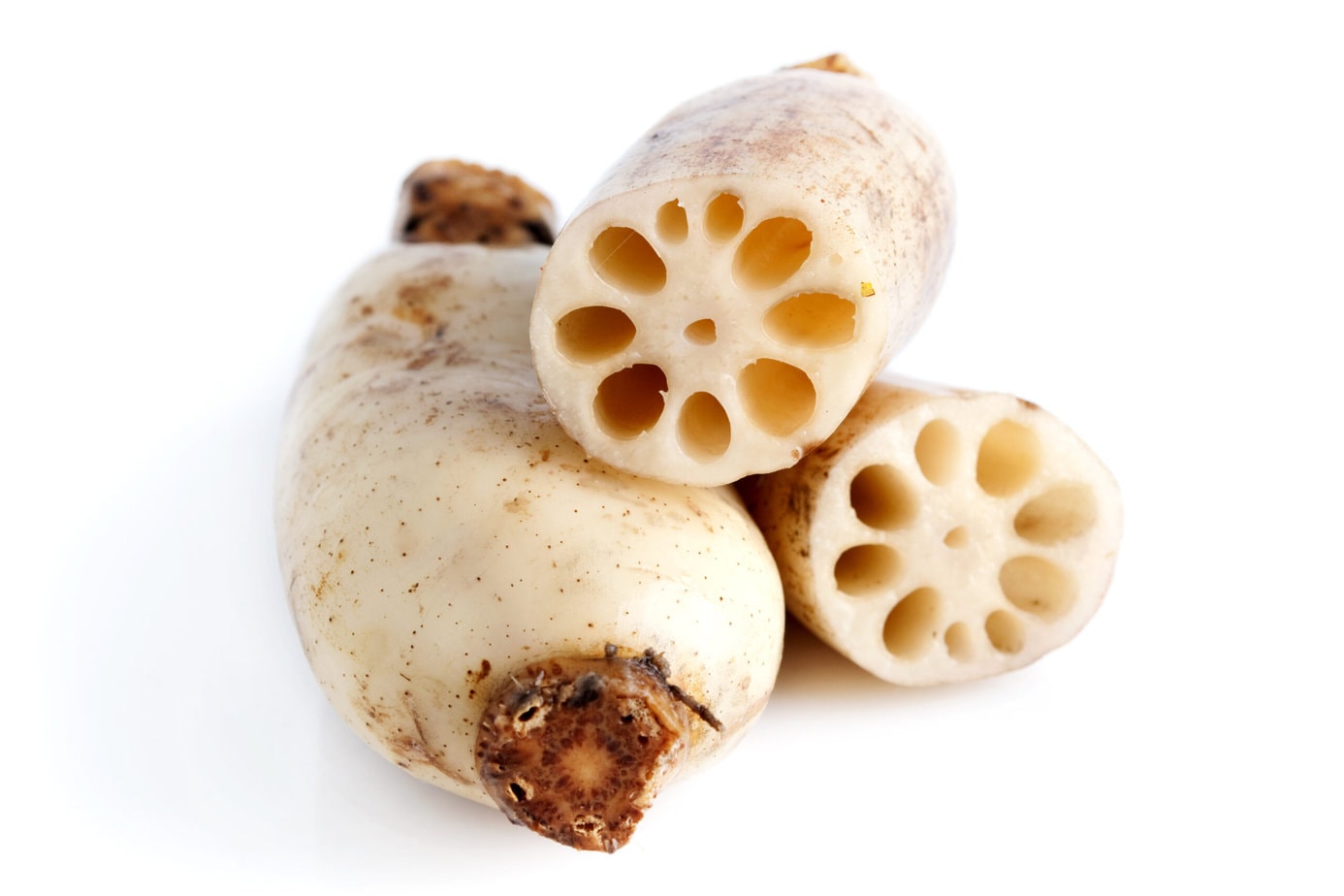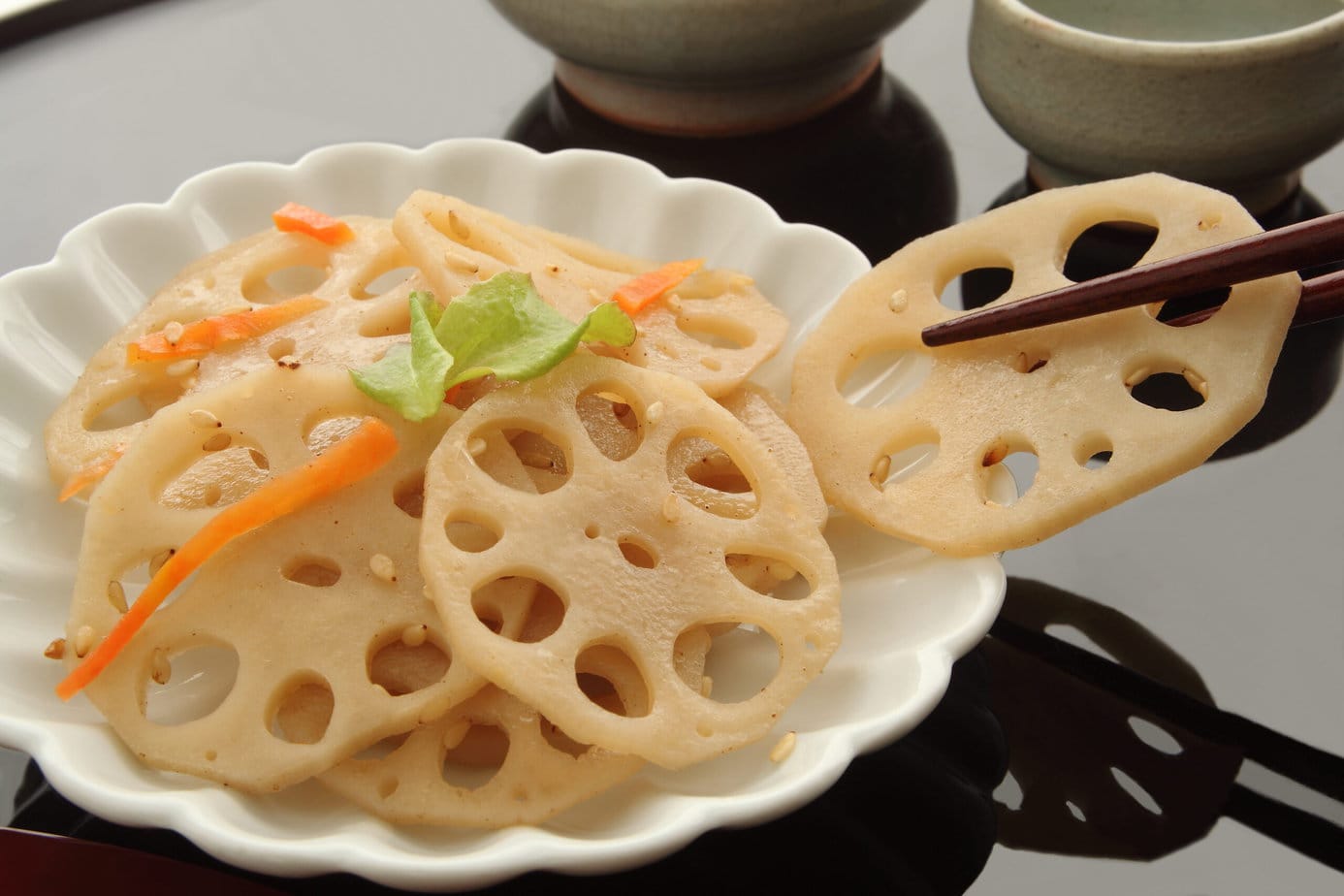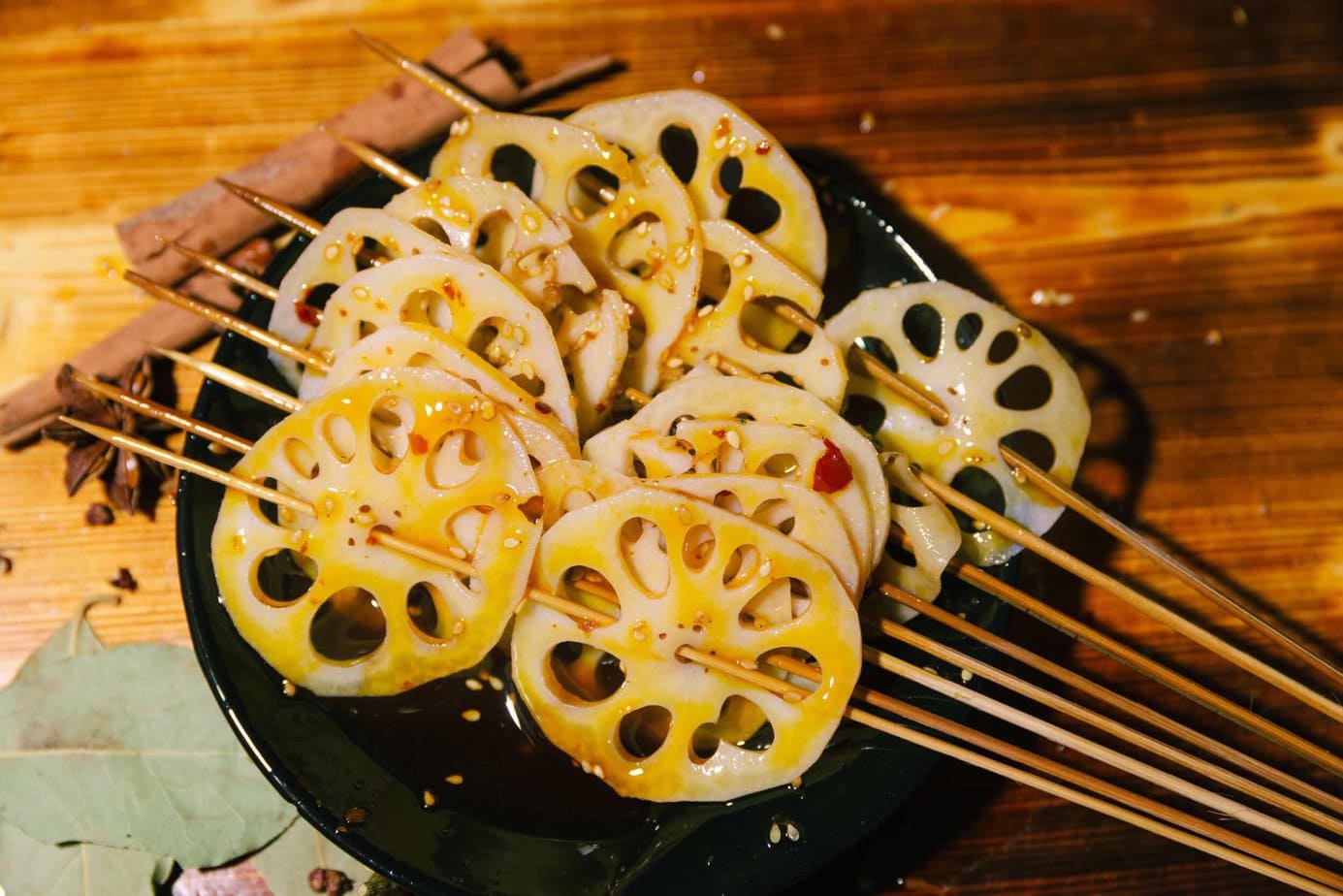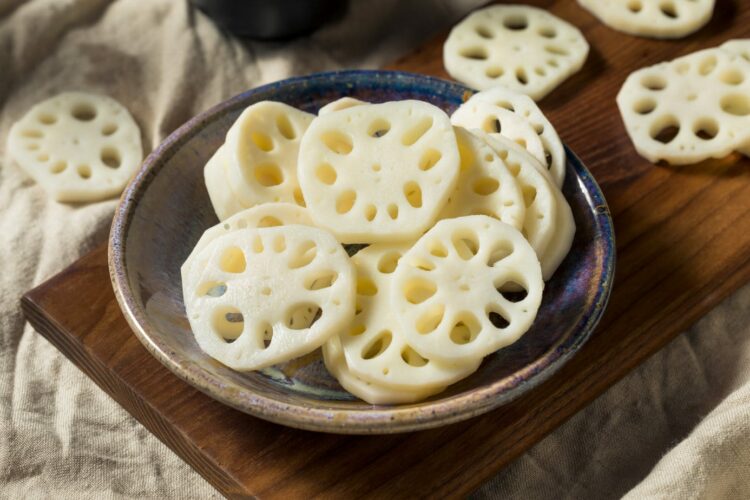What Is Lotus Root?
Lotus root is an ingredient widely used in Chinese cuisine, typically categorized as a vegetable. In fact, it’s the stem that connects the lotus flower on the surface to the bottom of ponds and rivers. The root is very thick and composed of segments. Visually, it looks a bit like a series of small sausages.
Lotus root has a reddish-brown skin on the outside and a creamy white flesh on the inside, somewhat like a raw potato. When you cut it, you’ll see that the slice is dotted with several geometric holes.

Its texture is crunchy when stir-fried and tender when boiled, while its flavor is rather sweet and fresh. Raw, its high water content makes it quite refreshing. It’s a food very rich in fiber and contains many other healthy nutrients!
Origins of Lotus Root
This is a food that already has centuries of history! A legend tells that He Xiangu, one of the eight immortals of Chinese mythology, once brought the lotus flower to the city of Jingtang, in Guangzhou province.
The village was starving due to poor harvests. After planting the lotus seeds, the villagers had bountiful harvests of a plant that grows on its own and regenerates each year… Doesn’t it remind you of the discovery of the potato in France?
Where to Buy Lotus Root?
Fresh lotus root is most easily found in Asian grocery stores in winter, the period when it’s harvested. To find good specimens, I advise you to look for lotus roots that are firm, heavy, and with skin free of cracks, holes, or soft spots.
You can also find lotus roots out of season, but in other forms: canned, candied, dried, or as frozen slices.

How to Store Lotus Root?
Here we’re talking about storing fresh lotus roots. As long as it hasn’t been peeled, you can store lotus root in a damp cloth in the refrigerator for up to two weeks. If you have leftover slices from a recipe, don’t throw them away!
You can keep them for a future dish in an airtight container, still in the fridge. However, use them as soon as possible! You can always extend their shelf life a bit by soaking them in slightly acidified water (with a little vinegar or lemon juice, for example).

The Different Varieties of Lotus Roots
Experts explain that there are over 300 kinds of edible lotus roots, but they are generally quite similar. Roughly speaking, you can find three slightly different types of lotus roots:
- Seven-hole lotus roots: when you cut a root and count seven holes in the slice, use it preferably for soups, as it’s sweeter.
- Nine-hole lotus roots: if you count nine holes instead, I suggest using them for marinating to put in a stir-fry, or just raw in a salad.
- Jingtang lotus roots: not about the holes, but the appearance this time, if you find roots that are longer and thinner than others, it’s probably a highly prized variety of lotus root.
Lotus Root in Asian Cuisine
The most classic use of lotus roots is as a vegetable side dish. For this, stir-fry the root slices with your other ingredients: their sweet flavor will take on the taste of what they’re cooked with. Also cooked, you can add it to a broth. In this case, add it at the end of cooking so it doesn’t turn into mush!
You can also eat it raw. It goes very well with a salad, a vegetable platter, or even in a sandwich. However, quickly dip the slices in slightly acidic water before adding them, as this will remove some of their bitterness!

